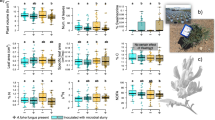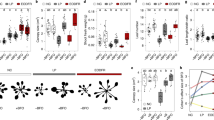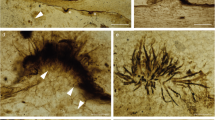Abstract
Endophytic fungi that asymptomatically colonize plants^1^ are diverse and abundant in tropical ecosystems^2^. These organisms can be weakly pathogenic^3^ and/or mutualistic, frequently enabling plants to adapt to extreme environments, alter competitive abilities of host individuals and improve host fitness under abiotic or biotic stresses^4,5,6^. Diplodia mutila is a symbiotic endophyte/plant pathogenic fungus infecting the palm Iriartea deltoidea^7^, which dominates many wet lowland Neotropical forests. The fungus is an asymptomatic endophyte in mature plants, and disease and mortality are expressed in some seedlings, while others remain disease free. Here we show that seedlings bearing the endophyte show enhanced resistance to insect herbivory. However, high light availability triggers pathogenicity of the fungus, while low light favors endosymbiotic development, constraining recruitment of endophyte-infested seedlings to the shaded understory by limiting survival of seedlings in direct light. These results provide evidence that patterns of plant abundance and the mechanisms maintaining tropical forest biodiversity are the result of a more complex interplay between abiotic and biotic environments than previously thought.
Similar content being viewed by others
Article PDF
Author information
Authors and Affiliations
Corresponding author
Rights and permissions
About this article
Cite this article
Alvarez, P., White Jr, J., Gil, N. et al. Light converts endosymbiotic fungus to pathogen, influencing seedling survival and host tree recruitment. Nat Prec (2008). https://doi.org/10.1038/npre.2008.1908.1
Received:
Accepted:
Published:
DOI: https://doi.org/10.1038/npre.2008.1908.1



